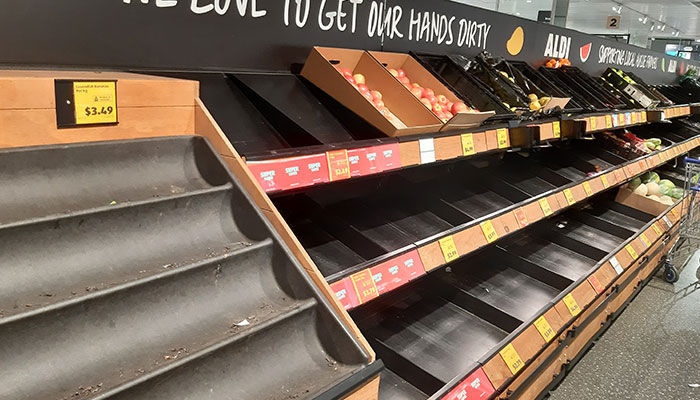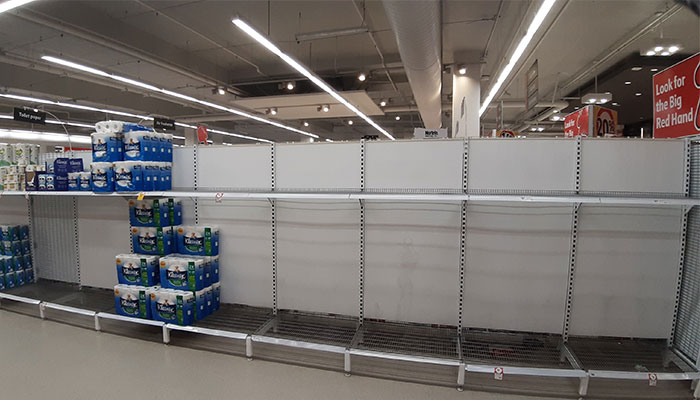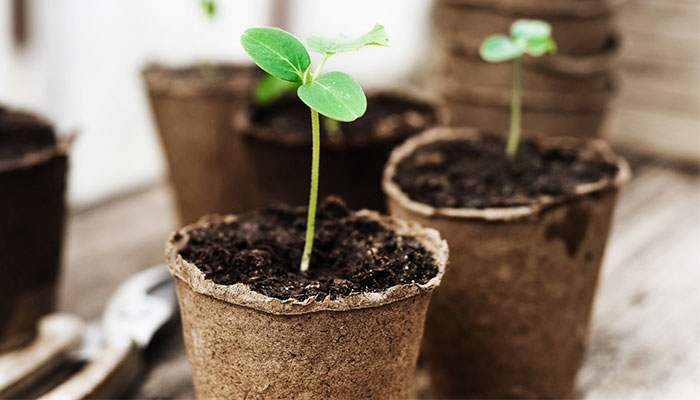As COVID-19 continues to spread around the world, we ought to question if consumers stockpiling food and other essentials are being irrational, or are they actually being rational by planning and preparing?

Empty shelves: stores are not able to respond to stockpiling customers quickly as changes in the established supply chain process can not be implemented immediately.
While it may be too early to tell, images splashed across the media of empty supermarket shelves are unlikely to allay fears that we are heading for some sort of virus-driven apocalypse.
So, why are supermarket shelves empty in the first place? For this we must go back to the basic business and economics terms of supply and demand.
It’s all about supply and demand
In order to supply a product on a supermarket shelf, resources, production, warehousing and delivery are all required. In other words, the entire supply chain must work smoothly.
In the immediate term, we are seeing empty supermarket shelves as the stores are unable to cope up with the additional demand which would require a change in the supply chain process, which won’t and can’t happen immediately.
This could perhaps be addressed in the short-term when Coles, Woolworths and Aldi adjust their supply chain, especially the delivery of their stock from warehouses to store shelves. However, in the medium to longer term, once warehouse levels begin to decline, there may be other issues if we go even further into the supply chain.
In an uncertain world, consumers are quite sensitive to what they see, especially if it impacts on their physiological and safety needs, and we have a sudden, somewhat rational increase in demand.
When it comes to demand, given the uncertainty of the impact that COVID-19 can have on the Australian and world economy, a consumer’s base instinct is to fulfil basic needs – physiological needs and safety needs, a la Maslow’s Hierarchy of Needs.
On the physiological needs side the demand for basic staples has increased, which is why there is a rush for rice, pasta and flour. As for safety needs, the demand for hand sanitisers, sprays and wipes has increased.
‘Elasticity’ in the market
The phenomenon of empty shelves is an issue of sensitivity, which in the world of business and economics is called 'elasticity' – how quickly, and by what proportion, can demand as well as supply respond to a change in the market.
In an uncertain world, consumers are quite sensitive (elastic) to what they see, especially if it impacts on their physiological and safety needs, and we have a sudden, somewhat rational increase in demand.

Ethical concerns: Dr Prashan Karunaratne says while supermarkets are usually willing to lower prices to clear an overstocked product, they are much less willing to raise prices when the reverse occurs.
On the other hand, supermarkets, which would otherwise be more profitable if they were able to meet this demand, are not as sensitive (inelastic) in their response due to the time they need to adjust their processes, as well as deeper supply chain issues.
The result of the elastic and sudden increase in demand, combined with the somewhat inelastic and slower increase in supply, has resulted in the empty supermarket shelves that we are seeing across the country.
Supply chain disruption
To further complicate the issue is the role that the epicentre of COVID-19 – China –plays. From a food security point of view, Australia is well-placed, having a large agricultural sector where a large proportion of our staples, fruit and vegetables are locally produced.
However, when moving beyond staples to other groceries such as biscuits, chips, frozen food and drinks, China does become more involved in the supply chain.
While the actual consumed item may not be sourced from China, most packaging does come from China. So locally produced rice, pasta and flour could be adversely impacted in this indirect way.
However, local suppliers state they can easily substitute locally sourced packaging instead. This may not be the case for other products such as the packaging of biscuits and frozen food items which may require specialised plastic packaging that does comes from China – and Australia doesn’t have a ready substitute, nor does it have the economies of scale to begin its own.

In a perfect market, we would see prices adjust in such a way so that demand and supply balance out. However, supermarkets in Australia usually have either a weekly or a fortnightly catalogue which tends to keep prices somewhat ‘sticky’, or stable, in the short term.
While supermarkets are usually willing to lower prices to clear an overstocked product off their shelves, they are much less willing to raise prices when the reverse occurs. In this instance, perceived profiteering, and perceived unethical behaviour, could harm the supermarket’s image, preventing them from adjusting prices due to the increase in demand – and hence we see empty shelves.
What about toilet paper?
Dr Prashan Karunaratne is a lecturer at the Department of Actuarial Studies and Business Analytics at the Macquarie Business School.



